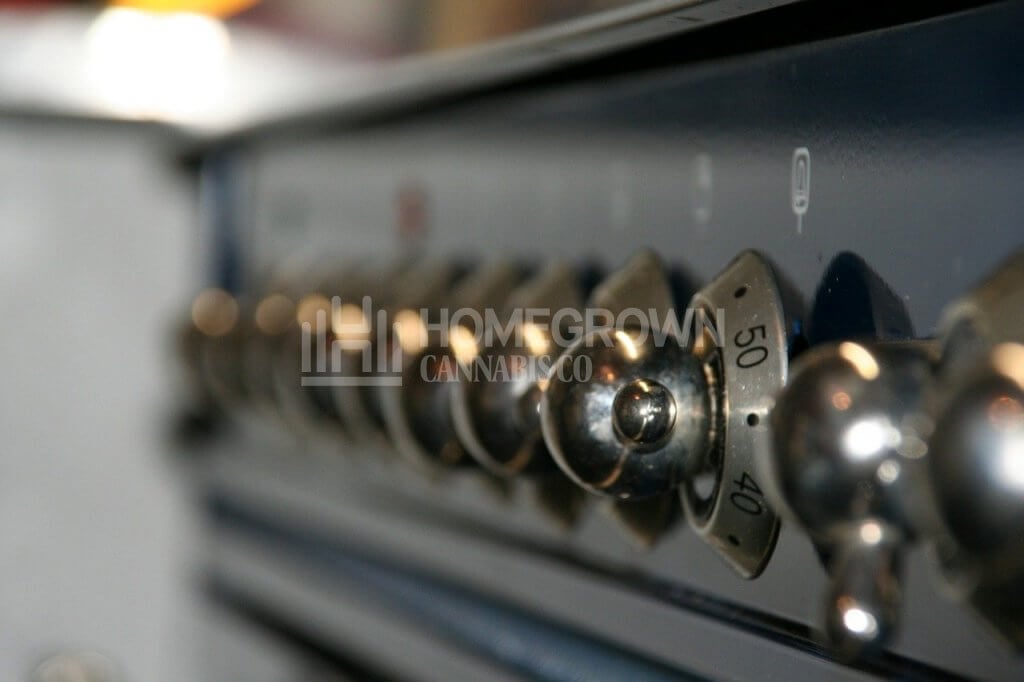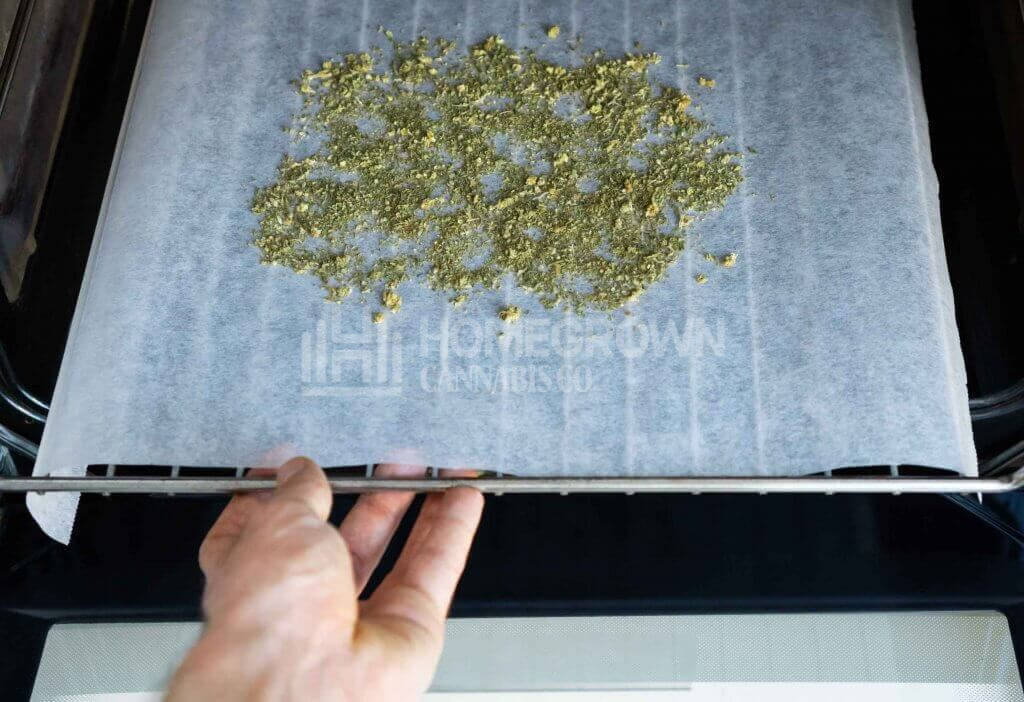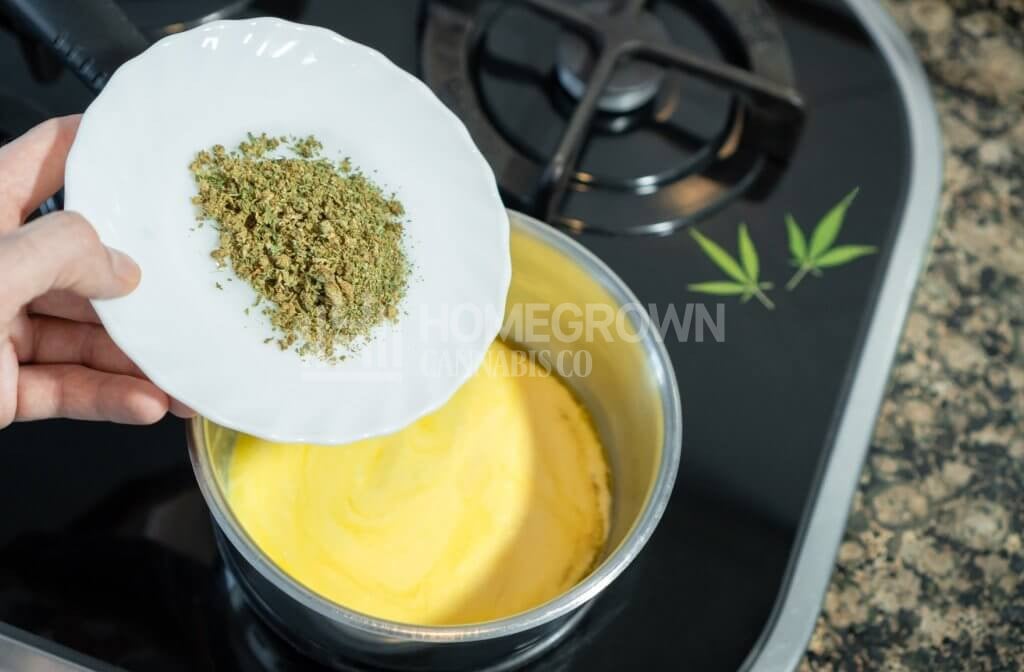How to Decarb Weed Stems, Shake & Trim
Discover how to decarb stems, shake, and trim to unleash their hidden potential. Don’t let these remnants go to waste; make the most of the diverse parts of cannabis plants.
Decarboxylating enhances the potency of weed, tapping into the full spectrum of cannabinoids they contain. With this knowledge, you can transform seemingly insignificant stems, shake, and trim into versatile ingredients that elevate your cannabis-infused creations.
Learn how to decarb shake, stems, and trim to maximize their potential. Many overlook and discard these leftovers, but they’re valuable resources. Whether you’re making cannabutter, using your oven, exploring sous-vide cooking, or simply boiling, I’ve got you.
I’ll guide you through these processes step-by-step. Let’s dig in.
Decarbing shake: What is decarboxylation?
Decarboxylation seems like a complex term, but it’s not. It refers to removing carboxyl from raw cannabis. Carboxyl is a combo of carbon and oxygen. These molecules inhibit the activation of cannabinoids that contribute to the desirable effects of cannabis.
Decarbing shake, trim, stems, or buds involves carefully heating them at a specific temperature to activate the naturally occurring cannabinoids.
Most focus on THC (tetrahydrocannabinol) and CBD (cannabidiol). These cannabinoids are found in their acidic forms (THCA and CBDA) in raw cannabis. Decarboxylation is necessary to convert them into their active forms for psychoactive and therapeutic effects.
Many enthusiasts are unaware of the fascinating chemical reaction occurring while smoking or vaping cannabis. The heat applied releases carboxyl, transforming THCA into THC.
Learn how to decarb stems, trim, and shake beforehand to make the best stoner food. Edibles with non-decarboxylated cannabis rarely yield the desired effects.
Why do you need to decarb shake?
Don’t let your trichome-laden stash go to waste. You can do much more with trim, like create your dream bhang recipe.
Before diving into the world of cannabis-infused treats, there’s a crucial step you need to take: decarboxylation. This process breaks down cannabis compounds, unlocking its full potential and allowing you to experience its euphoric effects.
Decarboxylation involves applying heat and time to transform inactive THCA into bioavailable THC to consume and enjoy properly.

It’s essential to decarb weed for cooking. You won’t get potent effects when you eat your weed without decarboxylating it. Its chemical makeup prevents THC from binding to cannabinoid receptors in the brain and nervous system.
Buds have the best results; the final product from decarb stems, shake, and trim may be of lower quality. Don’t underestimate them, since they still contain valuable cannabinoids.
How to decarb stems, shake, and trim: 3 easy methods
Several methods exist to decarb shake, stems, and trim for edibles once you grow homemade weed.
Aim for a coarse grinder for edibles compared to what you’d use for smoking. Finely ground weed makes it more challenging to strain out plant matter from your cannabutter. It also releases more chlorophyll, imparting a grassy flavor that not everyone appreciates.
Let’s dive into the three easy and effective methods on how to decarb stems, shake, and trim.
1. Baking in an oven
Using an oven is straightforward. All you need is basic kitchen supplies and your cannabis trim. Follow these steps:
- Preheat your oven to 230°F.
- Grind your weed trim into smaller pieces.
- Spread the trim evenly on a baking sheet or in an oven-safe dish.
- Bake the trim in the oven for 40–60 minutes, gently stirring every 10 minutes for even heating.
- It’s ready once the decarb trim emits a toasted aroma and exhibits a deep brownish-green color. Allow it to cool before use or storage.
Decarboxylation begins at around 230°F after 30–45 minutes of exposure.
Remember to observe the recommended time and temperature. Overdoing it converts THCA into non-intoxicating CBN, which forms as cannabis ages and develops at temperatures exceeding 284°F.

2. Sous-vide method
Sous-vide is a precise and controlled method for decarboxylation. Here’s how to decarb weed stems, trim, and shake using it:
- Take a heat-resistant or vacuum-sealed bag and fill it with your weed trim.
- Seal the bag using a vacuum sealer. Employ the water displacement method to remove the air and secure a tight seal as an alternative.
- Set your sous-vide cooker to 203°F, the ideal temperature for decarboxylation.
- Immerse the sealed bag in the water bath and submerge it fully.
- Allow decarboxylation for around 90–120 minutes.
- Once the time elapses, carefully remove the bag from the water bath and let it cool before opening.
3. Boiling
Boiling is a quick method for decarbing shake, stems, and trim from weed plants. To achieve this:
- Grind your weed trim into smaller pieces and place them in a heat-resistant bag or an airtight jar.
- Submerge the bag or jar containing the trim into a pot with water.
- Heat until it comes to a boil.
- Let it simmer for approximately 45 minutes, ensuring the water level doesn’t drop too much.
- Carefully remove the heat-resistant bag or jar from the boiling water. Allow for cooling before using or storing it.
Bonus: Making cannabutter with decarboxylated weed
A popular and versatile method of using a decarboxylated cannabis infusion is to make cannabutter. To effectively use decarbed trim using this approach, follow these step-by-step instructions:
- Slowly melt butter over low heat on the stove at a consistent temperature of around 190°F.
- Add the decarboxylated weed to the pot of melted butter and give it a gentle stir. Allow the mixture to simmer on the stove for approximately 3 hours, stirring every 30 minutes.
- After the infusion period, strain the hot mixture. A finer mesh results in fewer weed particles in your final product.
- Make sure to scrape off all the butter and decarboxylated weed mixture from the pan. Lastly, gently press it against the strainer, extracting as much liquid as possible.
After decarbing shake, stems, and trim, why not experiment with other cooking oils as alternatives to butter? A trending option to oil and butter is canna sugar. Try it out after decarboxylating your weed to add sweetness to your life and soul.

Decarb stems, shake, and trim like a pro
Decarboxylation is key to activating the compounds in your cannabis remnants. It enhances their accessibility for consumption or infusion into a range of cannabis products.
Enjoy the possibilities of your weed by understanding how to decarb stems, shake, and trim. Infuse the end product into butter or oil, and sprinkle it on your favorite food.
Ready to savor delectable meals infused with the finest cannabis? Look no further than Homegrown Cannabis Co. We stock premium cannabis seeds for beginners and experts. Grow your own plants and utilize them in interesting ways.
FAQs
You now have three easy methods to maximize the potency of your flowers through decarboxylation. Below are more questions about decarbing trim or weed stems.
How long does it take weed trim to decarb?
The duration for decarbing trim varies depending on the method and temperature. The process typically takes 40–60 minutes using an oven at a temperature of 230°F. It takes around 45 minutes using the boiling technique. The sous-vide method is longer, usually 90–120 minutes.
Keep an eye on the trim during the process and look for visual cues. The desired outcome is a toasted aroma and a deep brownish-green color, which indicates the decarboxylation process is complete.
Can I decarb fresh stems?
Once your plants mature, you can decarb the stems fresh from harvest. The process is the same as with dried trim. Remember that fresh plant material may contain more moisture. Adjust the decarboxylation time and temperature slightly and keep a close eye on it.
It’s advisable to dry and cure the stems beforehand to reduce the moisture content and facilitate the decarboxylation process.